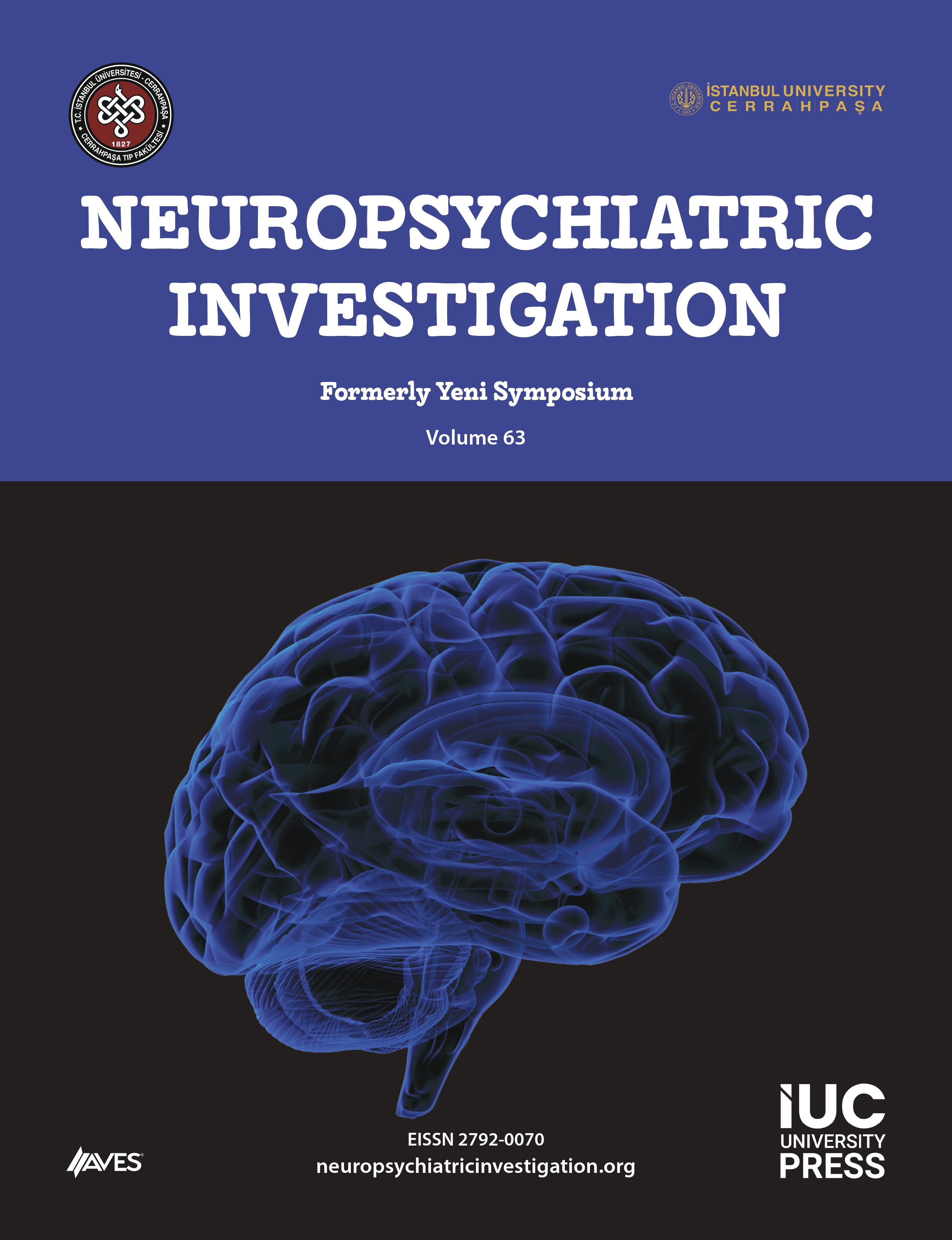Objective: In this study, the volumes and asymmetries of various brain regions of drug-naive patients with first manic episode bipolar disorder type 1 (FME-BD-1) were examined via magnetic resonance imaging (MRI) and compared with the healthy control (HC) group.
Methods: The current study included 54 patients diagnosed with FME-BD-1 and 67 age- and sex-matched HCs. Brain MRI segments of subjects were processed using the VolBrain software. The Young Mania Rating Scale (YMRS) was used to assess manic symptoms and their severity.
Results: There were 34 males (63.00%) and 20 females (37.00%) in FME-BD-1 group, 38 males (56.7%) and 29 females (43.3%) in the HC group. The percentages of total (P=.018), right (P=.014), and left cerebrum white matter (WM) (P=.022) of the FME-BD-1 group were significantly lower than the HC group. The percentages of total (P=.020), right (P=.028), and left cerebellum WM (P=.022) of the FME-BD-1 group were significantly lower than the HC group. The volumes of the total (P=.026) and left cerebellum WM (P=.030) in the FME-BD-1 group were significantly lower than the HC group. Accumbens (P=.018) and caudatus asymmetries (P=.006) were significantly different between the FME-BD-1 and HC groups. A significant negative correlation was found between total cerebrum WM and YMRS scores (r=−0.611, P < .001).
Conclusion: In conclusion, drug-naive FME-BD-1 is associated with cerebral and cerebellar volume reductions. Moreover, nucleus caudatus asymmetry and accumbens asymmetry were significantly different in FME-BD-1 compared to HCs.
Cite this article as: Kapıcı OB, Kapıcı Y, Tekin A, Şirik M, Örüm D. White matter reductions and basal ganglion asymmetries in first manic episode bipolar disorder. Neuropsychiatr Invest. 2025, 63, 0059, doi:10.5152/NeuropsychiatricInvest. 2025.24059.




.png)